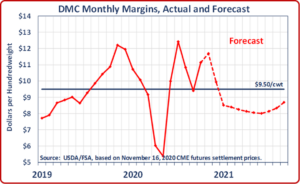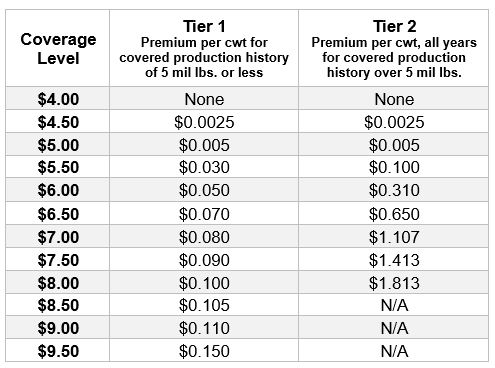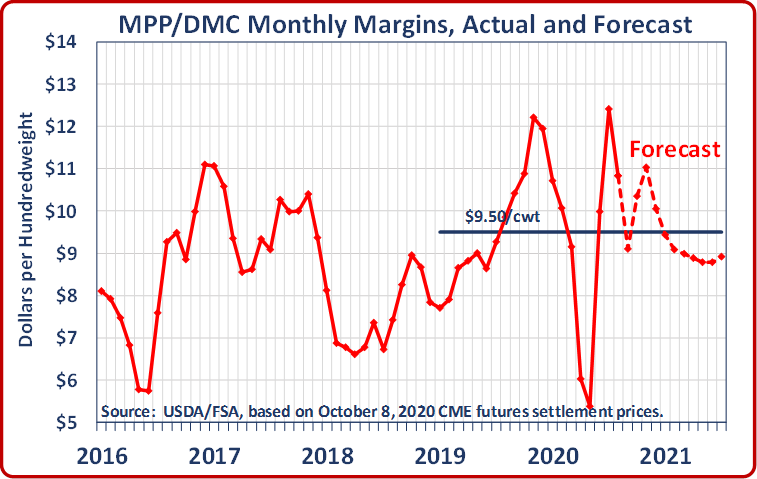Note: This is a lightly edited transcript of remarks made Oct. 27.
Good afternoon, and good morning to all of you joining us in the West. Let me add my thanks to you for being here for our first-ever — and I hope last ever — virtual annual meeting. I do wish we could be together in person and, like all of you, I’m looking forward to getting to the other side of this dreadful pandemic. But right now, we’re all trying hard to make the best of a bad situation.
So, I want to jump right into things here with a few brief remarks. Then we’ve got another great presentation for you: Our annual NMPF Town Hall issues update with a panel featuring some of our key experts working on your behalf on a wide range of dairy policy issues, economics and the FARM Program.
Because of our more limited time format for this year’s meeting we’ve condensed our traditional Town Hall panel for this live presentation. But we still want you to provide you with more in-depth discussions on all the issue areas we are involved in. So, we’ve taped a series of presentations that you can find online on our website, nmpf.org. I encourage you to watch them at your convenience to learn more about the wide range of important work NMPF has done this year.
And, man, what a year. For those who were with us last year in New Orleans, I’m sure none of you remember what I talked about. But my message was the importance of resilience — how it is one of the key strengths that all of you as dairy farmers consistently exhibit and how it has helped us get through nearly a half-decade of difficult times.
Well, little did I know back then just how important resilience was going to be for all of us. This year has posed challenges beyond what any of us could have imagined just one year ago…. challenges on our farms, in our families, and to our futures.
And yet, the obstacles we’ve faced this year will only make us stronger as we deal with the hardships that, yes, still lie ahead.
Think back to March, when the COVID-19 crisis began to profoundly change all our lives. The challenges were immediate… and clear. The solutions, less so. At National Milk, as we looked at all of this, there were a few things we knew. We knew that the nation’s dairy farmers and our member cooperatives are essential for the nourishment of those we serve. We knew that the dairy community can be formidable when it pursues its goals with unity and commitment. And we knew that our organization has demonstrated a track record of effectiveness, even in the face of daunting tasks.
That all gave us confidence. And just like the thousands of dairy farmers we serve, we went to work to tackle the crisis, consulting closely with our leaders, seeking ways to stem the damage and improve lives.
We needed to be a resource to not only our dues-paying members, but to all dairy farmers who were dealing with immediate crises in their operations and supply chains. And even in those darkest times, there were bright spots. Aided greatly by the efforts of the U.S. Dairy Export Council, international trade saw strong demand. Here at home, retail milk flew off store shelves, as consumers showed their support for the nutritious beverages they relied on most.
But the root of dairy’s resilience was centered, as always, on the farm, and led by many of you…. our farmer-leaders. Faced with an unprecedented rupture in the balance of supply and demand, many farmers used every tool in their arsenal to throttle back production — from changing feed rations and milking schedules to putting the brakes on herd expansion. Those efforts helped stave off what would have been a complete price collapse and they set the stage for a rebound.
Farmers and our co-ops took important steps to address the issues they could control. Meanwhile, we advocated for our industry before Congress and USDA, and the White House. As a highly perishable, 24/7/365 days a year commodity, dairy never stops, and that made the need for immediate, robust support for dairy simply essential. We engaged in marathon discussions, and strategized across the industry and throughout the government. Together, we succeeded in making sure dairy received important levels of government disaster assistance, both in the first round of the Coronavirus Food Assistance Program payments and in the more recent CFAP 2.
To be sure, these government programs are far from perfect – not all farms were treated equally, and we continue to work with Congress and USDA to remedy flaws in future disaster assistance. But this assistance did much to cushion the immediate blows to balance sheets from COVID-19. And it continues to help stabilize operations nationwide.
Beyond direct federal disaster assistance, we also knew that, while farm payments helped, they didn’t address the root of COVID-19’s impact on dairy – the devastating blow to dairy demand from lost foodservice sales, a huge part of our market.
We emphasized to policy makers how government dairy purchases can create a positive economic cycle, with programs like the popular Food Boxes providing products to families hit hard by the pandemic. Those government purchases create demand that strengthens prices, keeps processors operating and enables dairy farmers to get support where they really want it — through improved milk checks.
We’ve experienced a roller-coaster ride in prices for sure – but the federal assistance kept the worst-case scenarios from occurring. And it shows yet again how effective advocacy can prompt a forceful and helpful government response.
Just as important as protecting our businesses, of course, is protecting our families, and our workers, and our communities, especially during a pandemic. Dairy has always been a leader in stewardship to our land, our animals and our community – and this year has been no exception. Through the National Dairy FARM program, we quickly made available industry best practices and guidance to help address the crisis, and through our outreach and our coronavirus toolbox on our website, we gave our members – and all dairy farmers – the information they needed to adjust to dairy farming in this new reality.
So, what will all this mean in the days ahead? Well, make no mistake: this crisis is far from over. Without a vaccine, with an uncertain political future, with an economy that still hasn’t found a “new normal,” there’s no happy ending I can share with you today, because we still have a long way to go. But I’d like to conclude with a few observations that offer hope and optimism for the journey ahead:
- First, it is the strength of Farmer-owned dairy cooperatives that have led the industry through this crisis, and they will carry it through to the end. From our economic leadership, to our commitment to customers and consumers, to making our voices heard in Washington, co-ops remain the heart and soul of this industry. And this industry benefits best when our cooperatives speak with unified voices, on everything from marketing orders to on-farm best practices.
- Despite the few naysayers out there who love to sow discord in difficult times, it is our unity as an industry that enables us to achieve our goals and helps us prevail. We will continue to work together as this crisis evolves, and our track record of success this year helps set the stage for future success.
- Finally, the lessons we’ve learned here are applicable elsewhere. We have learned that the Dairy Margin Coverage program, which we fought for in the 2018 farm bill, provides important risk management and affordable catastrophic coverage when farmers need it most. And we’ve learned again that the positive stewardship story so crucial this year, focusing on farmers and their high level of care for their animals and the land, this provides the backbone needed for other exciting and challenging endeavors, such as our industrywide Net Zero Initiative and our Stewardship Commitment goals.
So, know that our challenges and risks are far from over.
But we’ve already proven a lot – to ourselves, and to the nation. We will get through this, and we’re stronger now than before. Throughout the world, everyone is hoping tomorrow will be brighter. We KNOW it will be, because of the work we’ve done together that has brought us here today.
Thanks again for this opportunity to speak to you.









